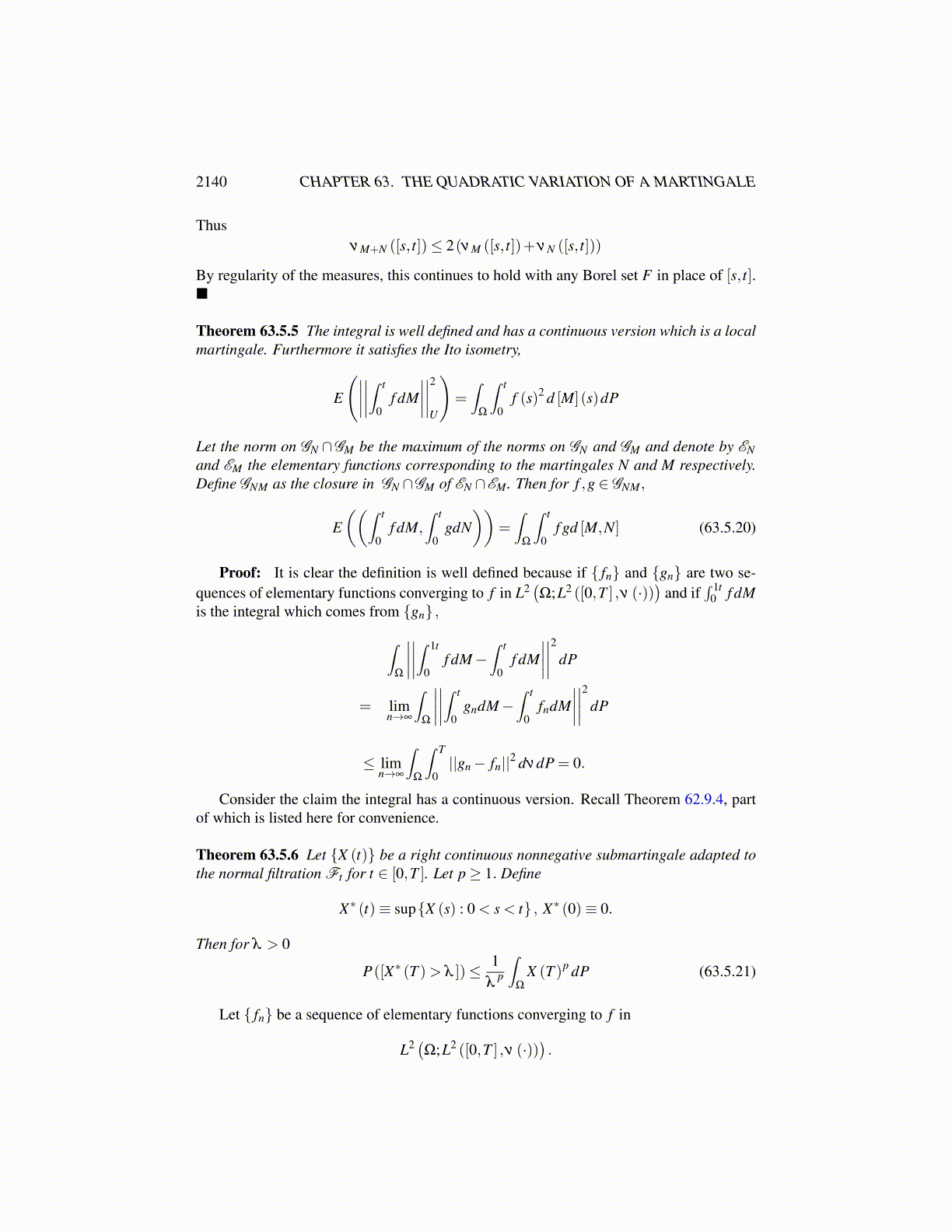
2140 CHAPTER 63. THE QUADRATIC VARIATION OF A MARTINGALE
Then for each ω, the integrand converges as l→ ∞ to
∑k, j
fkg j((M (t ∧ tk+1)−M (t ∧ tk)) ,
(N(t ∧ t j+1
)−N (t ∧ t j)
))But also you can do a sloppy estimate which will allow the use of the dominated conver-gence theorem.∥∥∥∥∥∑k, j fkg j (Mτ l (t ∧ tk+1)−Mτ l (t ∧ tk)) ,
(Nτ l(t ∧ t j+1
)−Nτ l (t ∧ t j)
)∥∥∥∥∥≤∑
k, j| fk|∣∣g j∣∣4M∗N∗ ∈ L1 (Ω)
by assumption. Thus the left side of 63.5.16 converges as l→ ∞ to∫Ω
∑k, j
fkg j((M (t ∧ tk+1)−M (t ∧ tk)) ,
(N(t ∧ t j+1
)−N (t ∧ t j)
))dP
=∫
Ω
(∫ t
0f dM,
∫ t
0gdN
)U
dP
Note for each ω, the inside integral in 63.5.13 is just a Stieltjes integral taken withrespect to the increasing integrating function [M].
Of course, with this estimate it is obvious how to extend the integral to a larger class offunctions.
Definition 63.5.3 Let ν (ω) denote the Radon measure representing the functional
Λ(ω)(g)≡∫ T
0gd [M] (t)(ω)
(t→ [M] (t)(ω) is a continuous increasing function and ν (ω) is the measure representingthe Stieltjes integral, one for each ω .) Then let GM denote functions f (s,ω) which are thelimit of such elementary functions in the space L2
(Ω;L2 ([0,T ] ,ν (·))
), the norm of such
functions being
|| f ||2G ≡∫
Ω
∫ T
0f (s)2 d [M] (s)dP
For f ∈ G just defined, ∫ t
0f dM ≡ lim
n→∞
∫ t
0fndM
where { fn} is a sequence of elementary functions converging to f in
L2 (Ω;L2 ([0,T ] ,ν (·))
).
Now here is an interesting lemma.